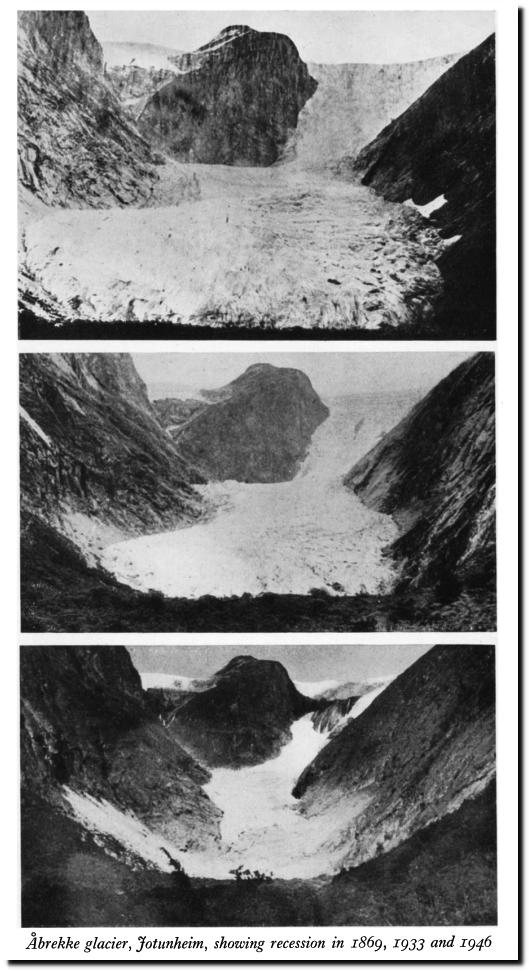According to the official IPCC temperature graph, glaciers form when it is warm, and they melt when it is cold.
“Many of the current glaciers in the Rocky Mountains reached their minimum size in the mid-1940s, then fluctuated and slightly increased in size during the 1950s and 1960s. They advanced somewhat through the 1970s and 1980s due to cooler summer temperatures”
Glaciers of Rocky Mountain National Park – Glacier Basics
September 28, 1910:
“RECEDING GLACIERS.
Except over a small area, it is generally understood, the glaciers of the world are retreating to the mountains. The glacier on Mount Sermiento in South America, which descended to the sea when Darwin found it in 1836, is now separated from the shore by a vigorous growth of timber. The Jacobshaven glacier in Greenland has retreated four miles since 1850, and the East glacier in Spitzbergen is more than a mile away from its original terminal moraine. In Scandinavia the snowline is further up the mountains, and the glaciers have withdrawn 3,000ft. from the lowlands in a century. The Araphoe glacier in the Rocky Mountains, with characteristic American enterprise, has been melting at a rapid rate for several years. In the Eastern Alps and one or two other small districts the glaciers are growing. In view of these facts we should not be too sceptical when old men assure us that winters nowadays are not to be compared with the winters of their boyhood.”
28 Sep 1910 – RECEDING GLACIERS. – Trove
Retreat of the Abrekke glacier in Norway before 1946.
 The Present Climatic Fluctuation on JSTOR
The Present Climatic Fluctuation on JSTOR
May 23, 1976
“Glaciers growingAll glaciers in western and northern Norway put on weight last year, scientists of the Norwegian Polar Institute report.
Folgefonna in western Norway, the country’s third largest glacier, got as much as 1.7 metres thicker, for instance.”






Now they are reading ice cores in Greenland, and claim we started measuring temperatures with instruments at the coldest point in the last 10,000 years.
https://selfreliancecentral.com/2024/11/16/if-hes-correct-this-is-the-most-important-climate-video-ever/
Of course, this is only the cores in Greenland at one or two spots because the ice cores from the equator are still awaiting processing. 😉